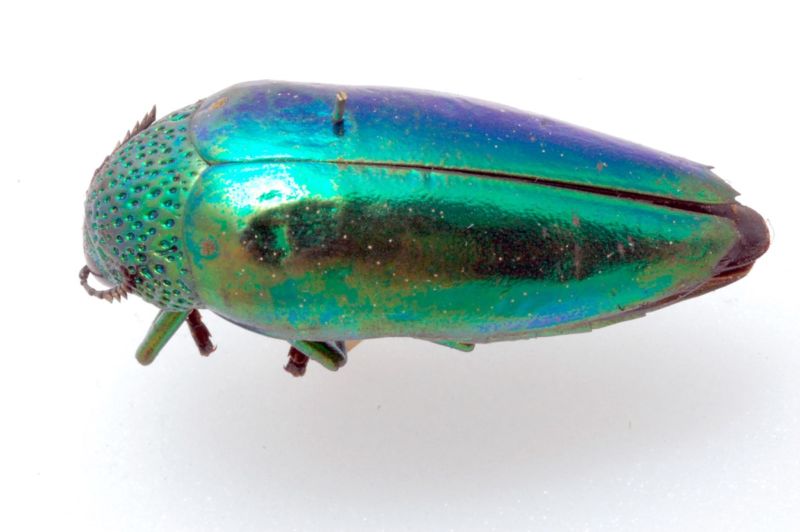Jewel beetle’s bright colored shell serves as camouflage from predators

Enlarge / The brightly colored shell of this jewel beetle is a surprisingly effective form of camouflage, according to a new study by scientists at the University of Bristol. (credit: Bristol Museums, Galleries, and Archives)
Artist and naturalist Abbott Handerson Thayer became known as the "father of camouflage" with the publication in 1909 of a book on coloration in animals. He was particularly fascinated by the phenomenon of iridescence: many species exhibit bright, metallic jewel tones that shift hues depending on viewing angle. While iridescence is often viewed as a means of sexual selection-think the magnificent peacock, shimmering his feathers to attract a willing peahen-Thayer suggested that in some species, it was also an effective means of camouflage.
Thayer endured a fair bit of mockery for his ideas, most notably from Theodore Roosevelt, a big game hunter who thought Thayer had grossly overstated his case. Indeed, there has been very little empirical support for Thayer's hypothesis in the ensuing century. But researchers from the University of Bristol have now uncovered the first solid evidence for this in the jewel beetle, according to a new paper in Current Biology.
What makes iridescence in nature so unusual is the fact that the color we see doesn't come from actual pigment molecules, but from the precise lattice-like structure of the wings (or abalone shells, or peacock feathers, or opals, for that matter). That structure forces each light wave passing through to interfere with itself, so it can propagate only in certain directions and at certain frequencies. In essence, the structure acts like naturally occurring diffraction gratings. Physicists call these structures photonic crystals, an example of so-called "photonic band gap materials," meaning they block out certain frequencies of light and let through others.
Read 8 remaining paragraphs | Comments